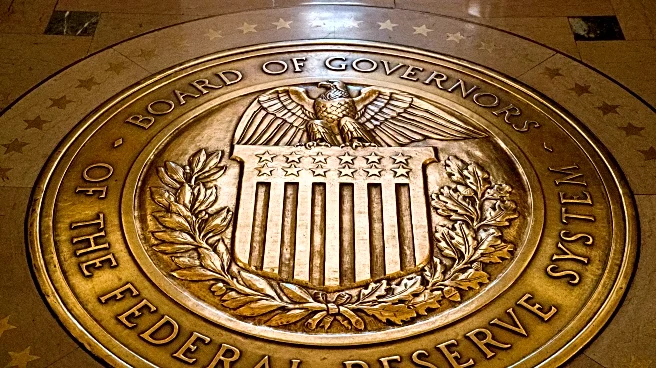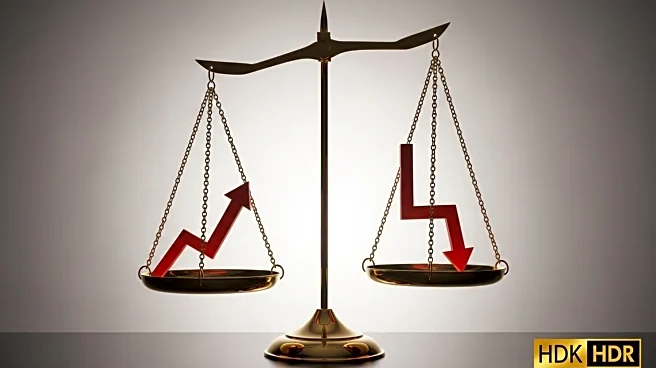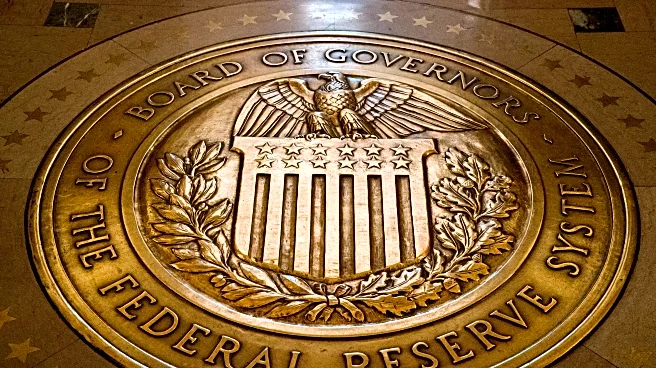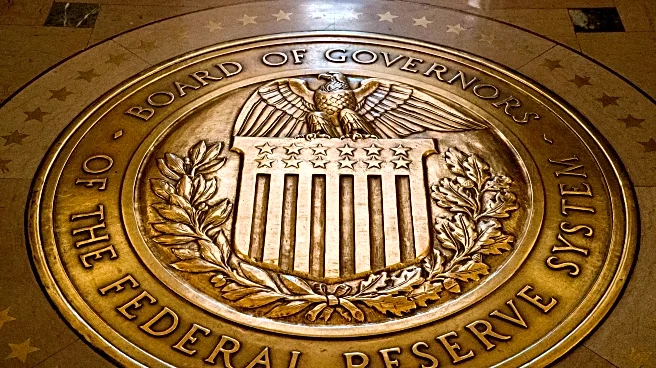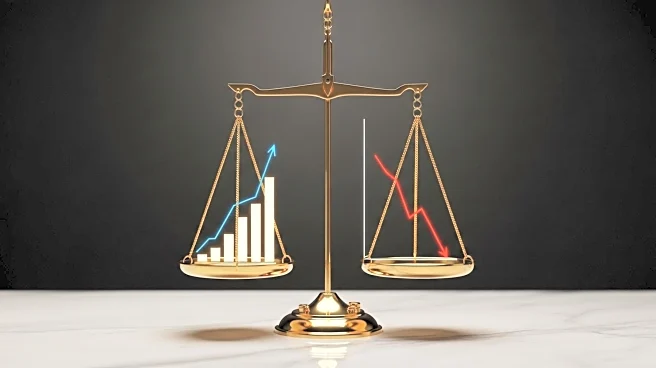What is the story about?
What's Happening?
The Federal Reserve has reduced interest rates by a quarter point, marking the first cut since December 2024. This decision aims to provide relief to borrowers and address concerns over the weakening labor market. The rate now stands between 4% and 4.25%. The move comes amid mixed economic data and fears that tariffs could increase inflation. President Trump has been pressuring the Fed for rate cuts, criticizing Chairman Jerome Powell's handling of the situation. The Fed's decision reflects a shift in focus from inflation to labor market concerns, as highlighted in Powell's recent Jackson Hole speech.
Why It's Important?
The rate cut is significant as it impacts borrowing costs for consumers and businesses, potentially stimulating economic activity. However, it also reflects underlying concerns about the U.S. job market and economic stability. The decision may influence stock market performance, as evidenced by the Dow Jones Industrial Average's rise following the announcement. Stakeholders such as borrowers and investors stand to benefit from lower rates, while concerns about inflation and economic growth persist. The Fed's actions could shape future monetary policy and economic strategies.
What's Next?
The Federal Reserve may consider additional rate cuts in upcoming meetings, with the next decision expected in October. The market anticipates further reductions, as indicated by the Fed's dot plot. President Trump's continued pressure on the Fed could influence future decisions. Economic data and inflation trends will likely play a crucial role in shaping the Fed's policy direction. Stakeholders will closely monitor these developments to assess potential impacts on the economy and financial markets.
AI Generated Content
Do you find this article useful?


